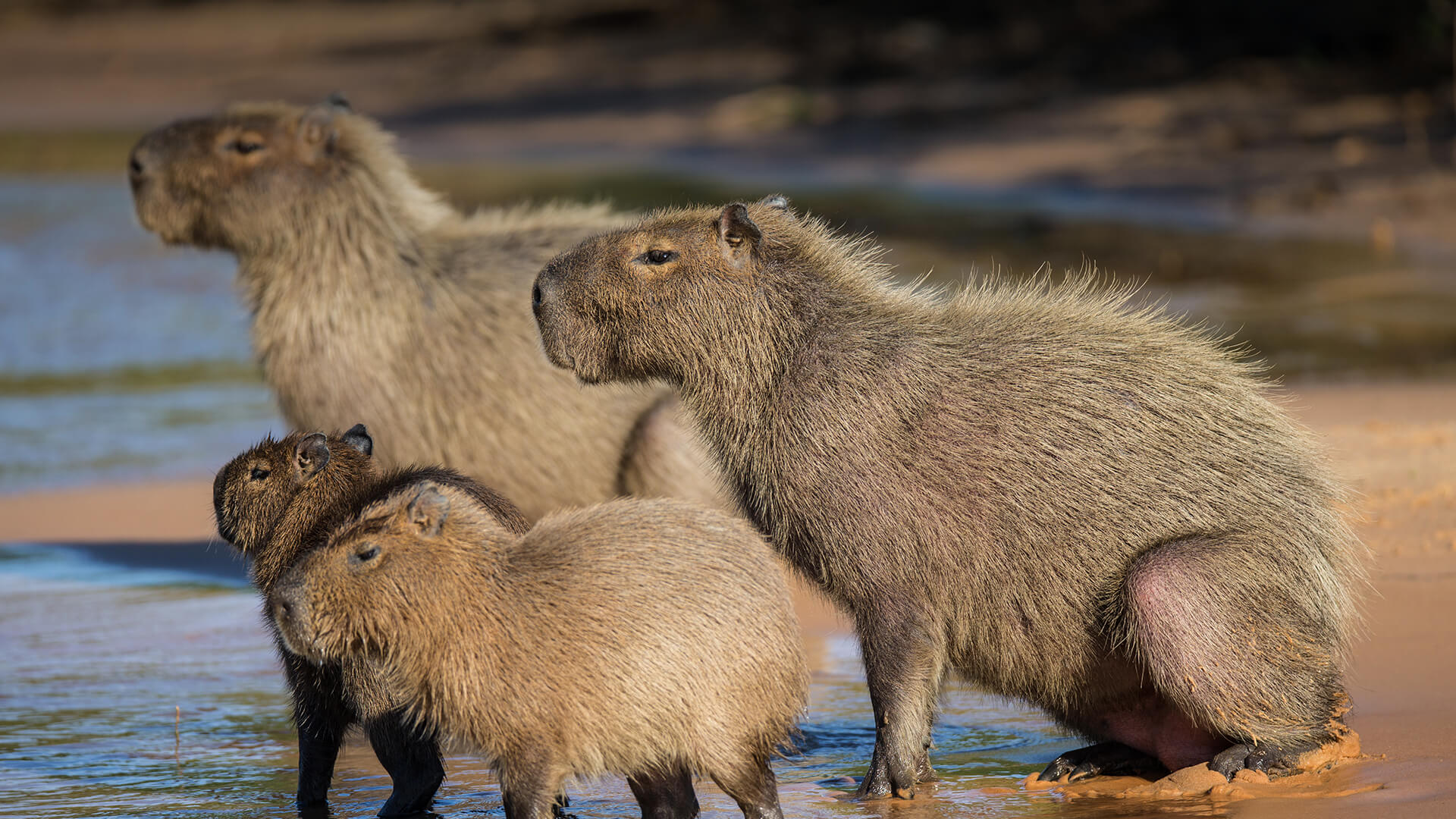The world’s largest rodent title is given to capybara. This occurs with its 150 cm or 1.5 ft built and the shoulder of 130 cm or 4ft in its length. Its weigh may also reach 35 to 70 kg. This is 75-150 lb if to be converted. Many Capybara facts would agree that the animal has always been semi-aquatic. This always spend its time under the water. As a matter of fact, they have the ability to inhabit that of the southern Central America. The same is also true with northern South America. They do this in both of the rain forests and savannas. These are always near the rivers, ponds and lakes.

Capybaras knows the importance of water. This is considered to be a primary source for them. They never fail to retreat on most murky waters. This is a way for them to go away from predators trying to victimize them. Among there predators are caimans, anacondas, ocelots, pumas, and as well as happy eagles. Needless to say, these capybaras can adapt well to the life of semi-aquatic habitat. This is possible for them because they have webbed feet. These help them in maneuvering over the water and even that of a traverse soft, muddy ground. Most of their facial features are found towards their large head’s top. This allows them to breathe while they swim. They also have the capacity to submerge to water. This may occur for five minutes. They can just press their ears against that of their heads. This is a way for them to keep the water out. Once they have exited the water, they can quickly dry their coarse hair. This is easy for them too.
Most of their day is spent in water. They do this to wallow in the shade. They can also graze in the evening and morning as the temperature becomes cooler for them. They can also feed on most aquatic plants and grasses. They have the ability to consume at least 3 to 3.5 kg of it on a daily basis. This is how different it has always been.
As mentioned above, these capybaras easily adapt. They have this special digestion as well. This gives them the chance to absorb whatever nutrients is there for as long as it fits their highly fibrous diet. In their intestines, there is this large fermentation cecum or chamber. This is in-charge in churning fibrous materials while they mix in enzymes, bacteria and gases. These are all responsible in aiding their digestion. This animal eats its own droppings too. This kind of activity is referred to as coprophagy. This usually allows them to have nutrients and proteins digested.
The animal is very social in nature. It only lives in a small family. It may just be a group of 10 to that of 20. Most of its group comes with a male – which is dominant. There may also be a number of females. This also includes their offspring, and as well as their subordinate males. All of these are evident.